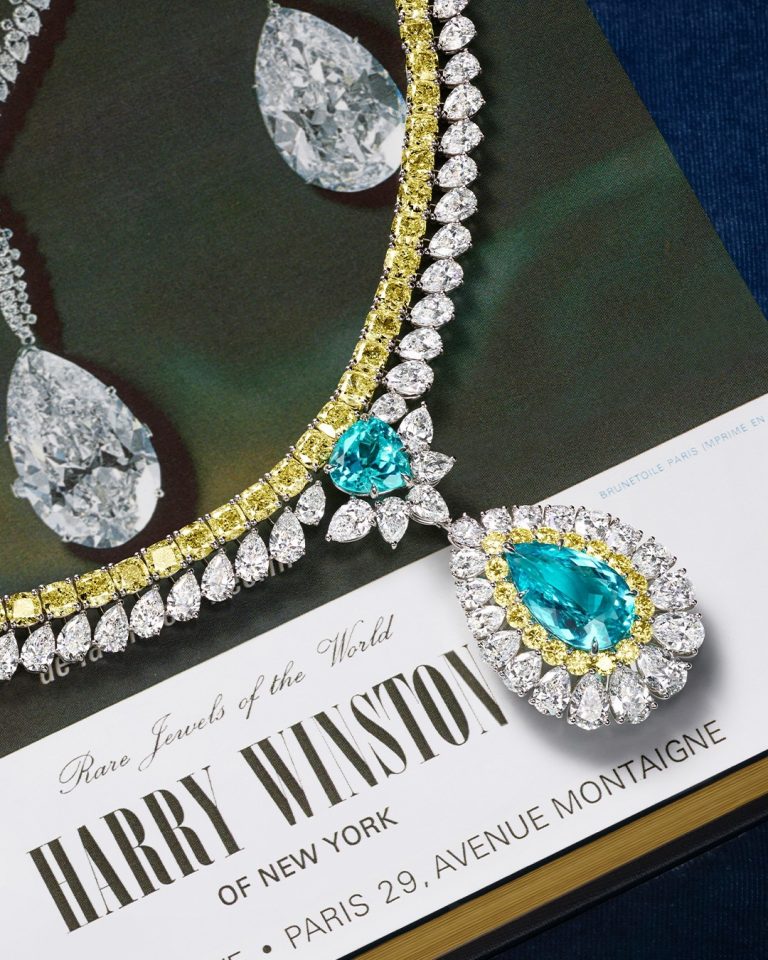There are moments in life that feel like poetry—quiet, fleeting, yet unforgettable. A breeze catching the edge of a silk scarf. A single rose petal drifting through the air. A pearl, soft as breath, glistening against bare skin. With its new Les Pétales high jewelry collection, Mikimoto has transformed these delicate moments into enduring works of art. It is not merely a collection. It is a meditation—on femininity, on transience, on beauty that does not clamor, but whispers.
Mikimoto Les Pétales: A Petal Caught in Time
The Mikimoto Les Pétales high jewelry collection is inspired by the falling of a rose petal—an image so simple, so universal, it almost resists language. And yet, it is this moment, this gentle release from bloom to breeze, that Mikimoto captures in precious metal and pearl. The collection debuted during Paris Haute Couture Week, a fitting stage for something so ethereal. More than 40 pieces, necklaces, rings, earrings, bracelets, brooches, even headpieces, form a garden suspended in midair.
Here, nature is not mimicked. It is revered. And nowhere is that reverence more evident than in the pieces where petals appear to flutter across the skin—soft arcs of rose gold, diamond-fringed curves, each form suggesting motion without demanding it. Mikimoto has long understood that the best jewelry does not sit on the body. It breathes with it.
Pearls, Reimagined
At the heart of Les Pétales are the pearls for which Mikimoto is legendary. They are not the pearls of nostalgia—prim, predictable, tucked into jewelry boxes for decades. These are pearls in flight. Pearls in bloom. Pearls dancing.

The collection’s signature pieces are built around Akoya cultured pearls, whose luminous sheen has been Mikimoto’s signature since founder Kokichi Mikimoto first cultivated them over a century ago. Set against rose gold and diamonds, the Akoya pearls glow like moonlight through petals. Alongside them are White South Sea pearls, generously sized and radiant, anchoring key pieces like the Place Vendôme necklace—a showpiece with 13 South Sea pearls and 2.20 carats of diamonds.

And then, quietly, unexpectedly, a rare treasure appears: natural conch pearls, nestled in the heart of a sculptural brooch like a secret only a few will understand. Their pink flame-like shimmer, impossibly rare in nature, feels like a final stroke of poetry in a collection already brimming with it.
A Dance of Gold and Light
To render a falling petal in metal is no small feat. But Mikimoto’s artisans do not force nature into geometry—they coax it. Each piece is crafted in 18K white, yellow, or rose gold, and sculpted with an attention to detail that borders on devotion. In some bracelets, petals seem to float just above the wrist, caught in invisible currents. Earrings suggest a bloom opening mid-air. Rings echo the swirl of a flower releasing its scent.

Diamonds and colored gemstones are used not to dazzle but to trace the architecture of the natural world. Pink sapphires, tourmalines, garnets—they appear like dew on the lip of a rose, or a sunrise edging the sky. These are not gems arranged for sparkle’s sake; they are placed as punctuation, as breath marks in a verse. Even the smallest elements, an earring’s curved post, a clasp disguised as a petal’s stem, are finished with the kind of meticulous care that turns craftsmanship into art.
From Paris to Ginza: A Tale of Two Cities
Several pieces in the collection pay homage to the places that shaped Mikimoto’s identity. The Place Vendôme series, named after the jewel-studded heart of Parisian luxury, features round pearls embraced by golden petals, referencing the symmetry of Paris’s elegant façades. The bracelet in this suite is particularly evocative: an Akoya pearl rests in a cradle of diamonds and pink gold, like a rose petal kissed by morning frost.

Then there is Les Pétales de Ginza, a suite of pieces inspired by Tokyo’s Ginza district, where Mikimoto’s flagship boutique has stood since 1899. Here, the design language shifts—more architectural, more contemporary, yet still tethered to the organic. Pink gold, South Sea pearls, and 0.46 carats of diamonds fuse into a look that feels unmistakably Japanese: serene, sophisticated, unforced.

It is in these dualities—East and West, past and present, stillness and movement—that the collection finds its most compelling rhythm.
Wearing the Wind
The genius of Mikimoto Les Pétales is not only in its visual beauty, but in how it makes you feel. There is something inherently romantic about it—not in the clichéd sense, but in the way it invites the wearer to remember her softness, her strength, her impermanence.

To wear a Les Pétales necklace is to carry a quiet rebellion. Against noise. Against haste. Against the kind of beauty that shouts. This is jewelry for the woman who understands that tenderness is not weakness, but choice.
In a world increasingly obsessed with spectacle, Mikimoto offers something rare: restraint with emotional depth. These pieces don’t compete. They converse. They listen.
Why Les Pétales Matters

At first glance, Mikimoto Les Pétales may seem like a gentle collection. But make no mistake—it is quietly radical. It challenges the notion that high jewelry must be ornate to be significant, or grand to be remembered. Instead, it suggests that the smallest gesture—a pearl perched on a petal, a diamond mimicking a vein—can say everything.

In reimagining the pearl not as a relic of the past, but as a living, moving muse, Mikimoto cements its role not just as a custodian of heritage, but as a visionary. And in doing so, Les Pétales becomes more than a collection. It becomes a reminder. That beauty is fleeting, yes—but when caught in gold and pearl, it can linger forever.
Featured image: Mikimoto

Amanda Akalonu is dedicated to weaving together the worlds of jewelry, watches, and objects through a lens of literary storytelling.




